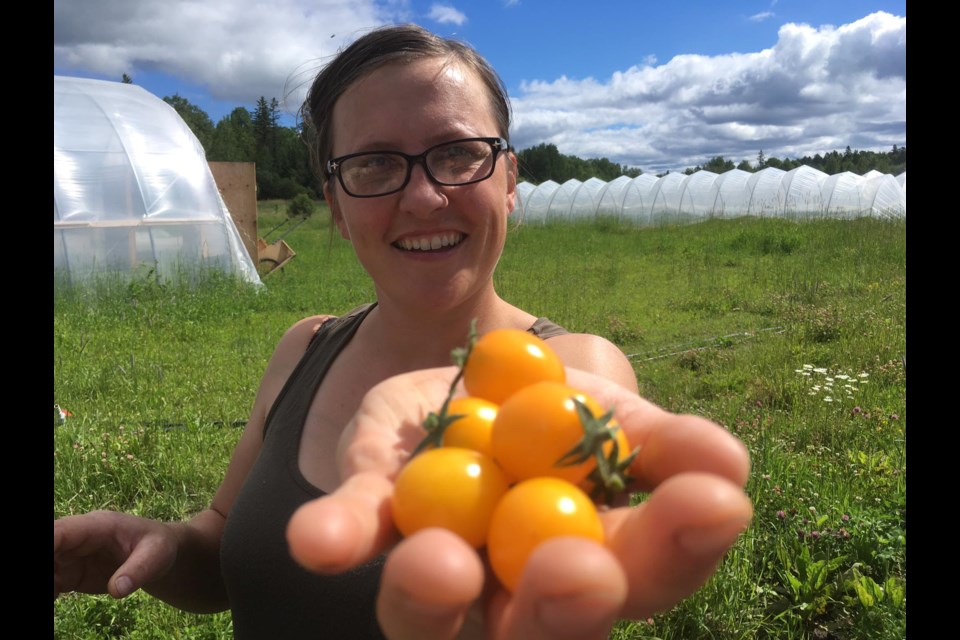When Mike Visser started producing veal 11 years ago, he was primarily selling his products from the farm, via home delivery, and at the Thunder Bay Country Market.
But if he wanted greater longevity in the local meat market, Visser realized, he would have to diversify his client base beyond the direct-to-customer route.
“Although these avenues are great ways to market product, they are also very time-consuming,” said Visser, the owner-operator of My Pride Farm in Thunder Bay.
“It became clear that in order to expand my production and sales, I would need to start selling products at a wholesale level.”
So Visser began initiating relationships with organizations he thought he’d like to do business with.
Sometimes they’d connect at a local food producers’ workshop or through word of mouth, and other times he’d cold call a prospective client to gauge their interest.
Across the board, cultivating and maintaining personal connections with people have been crucial steps in growing the business.
“You’re not just selling a product,” Visser said. “You’re selling yourself and your story, so that when people purchase products from you, they feel like they are also investing in you as an individual and the community.”
Today, he finishes 90 calves a year, the equivalent to 40,000 pounds of meat, which are sold and marketed to a mix of consumer, retail and wholesale clients — the latter of which makes up the largest percentage of his business at 55 per cent.
“When the pandemic hit, the institutional sales were the only part of the business that was not affected,” Visser said. “So that was a big benefit.”
Visser was one of a trio of Northern Ontario producers sharing their wholesaling tips and suggestions during an April 6 webinar hosted by the Rural Agri-Innovation Network (RAIN).
As producers seek ways to enter the wholesale market, experienced producers can provide valuable lessons to ease the process.
Like Visser, Jeff Burke found that personal relationships helped smooth the way for his entry into wholesaling.
His operation, Brule Creek Farms, located 40 kilometres west of Thunder Bay, produces fall rye, wheat, oats and canola on 400 acres. The rye and wheat are milled into flour, while the canola is pressed into oil. Since 2010, Brule Creek has also produced a line of value-added baking mixes, including pancakes, muffins, scones, pizza dough, cookies and cupcakes.
Burke cautioned producers that entering the wholesale market is a bit of a learning curve, especially for someone like him who didn’t have a background in food production.
“The first couple of stores that I approached, they were asking about what kind of markup, and what’s your suggested retail, and I had no idea how to really figure that out,” said Burke, who trained in biology and environmental sciences at Lakehead University.
“I had no idea of how to figure out my cost of production, but then I didn’t really understand the business model of some of these wholesalers.”
Burke wasn’t deterred, however, eventually learning how to price his products competitively.
In his personal relationships with clients, flexibility has proven an invaluable skill that’s come in handy when challenges arise.
There have been scenarios over the years in which he turned a “no” into a “yes” simply by listening to the client’s needs and working with them to fine-tune a product to something more tailored to their clientele.
Examples include developing a whole wheat pizza dough to meet the nutritional guidelines set out by a school food program, or producing a bran muffin mix with a lower sugar content for an institutional client.
“These relationships are a lot of back-and-forth,” he said.
At Three Forks Farms in Gore Bay, Peggy Baillie and her husband Eric Blondin produce organic vegetables, pasture-raised chicken, and seeds on the west end of Manitoulin Island.
They, too, employ a mix of retail and direct-to-consumer sales, with the veggies and seeds also sold via wholesale, primarily to grocery stores, restaurants and caterers.
Producing vegetables profitably can be a tricky business because of their seasonality, Baillie said, but moving to a wholesale model has actually helped increase their sales in other areas.
“What we found is that if we get our stuff in grocery stores, we get more brand recognition and it actually drives more people to our markets overall and our direct-to-consumer sales, which has really been beneficial for us both ways,” she said. “So we’re also able to move higher volumes.”
Baillie advised producers considering wholesale to familiarize themselves with their cost of production versus profit margins before making the leap, since the move has to be profitable in order for it to be worth their time and effort.
She also warned against betting on just one wholesale client, something she and Blondin learned through experience.
One year, two of the farm’s largest clients decided they weren’t selling local products anymore, but hadn’t notified the producers. Baillie and Blondin had to respond quickly in order to avoid a major loss.
“We really had to pivot on the dime at that moment to find new markets for our products,” Baillie said. “But we had a diverse marketing stream, and we were able to move that product without too much challenge.”




